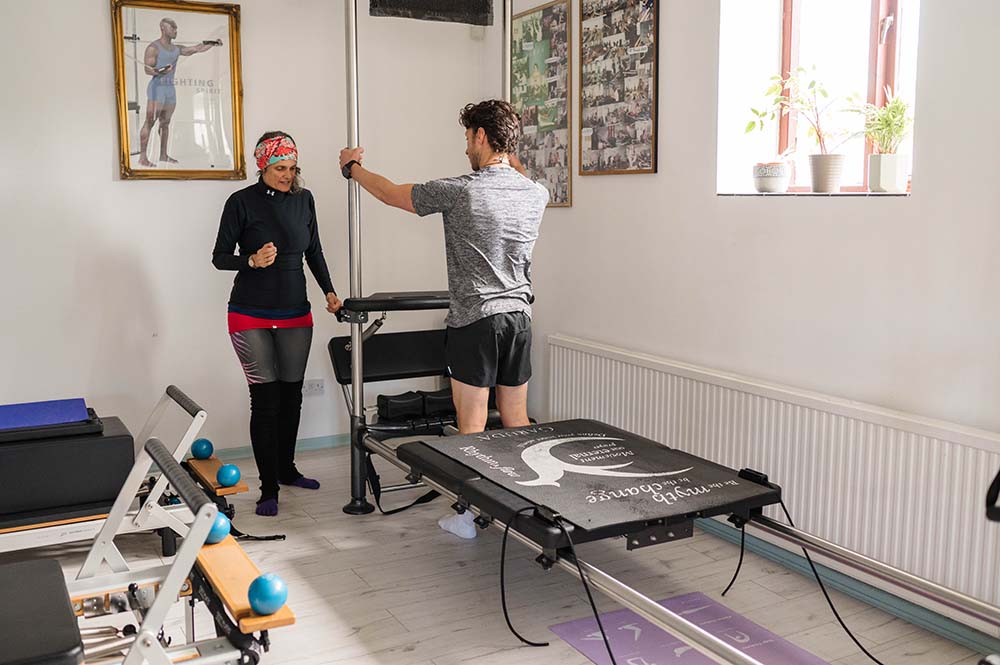
Two of the most popular forms of mind/body exercise today, yoga and Pilates have both shown their strengths in the fitness industry.
Now they show aptitude toward training an extensive niche market: athletes.
Pilates is one of the fastest-growing forms of exercise in the world, with more than 10 million participants in the United States alone. And athletes are turning to this form of exercise as a complement to their training regimens to get an edge on their competition. In the second annual Fitness Trends survey conducted by the American College of Sports Medicine, Pilates made the top 10 list of trends for 2008.
“Pilates helps athletes develop core strength, increase flexibility, assist in rehabilitation after injury and create balance throughout the entire body.” Says Moira Merrithew, Executive Director of Education for STOTT PILATES. “As a result, athletes can withstand rigorous training regimens and ultimately improve their golf drive or baseball pitch, prevent or recover from injury and maintain an optimal fitness level for the activity of choice.”
The Bottom Line
Traditional athletic training methods will help develop the muscles required in a specific sport, but may not address the stabilizing muscles around the joints or the torso. Often, one muscle is identified, and exercises are designed to isolate that muscle, usually in a single plane of motion. However, Pilates exercises can be more complex than traditional moves and will therefore recruit a larger number of muscle groups or strengthen the same muscles from many angles and in a variety of different ranges of motion.
Pilates Benefits for Athletes

Yoga is one of the most common group X programs today. Members of almost every health club or fitness center love this 4,000-year-old practice that combines science, art and medicine. As a union of mind, body and spirit, yoga helps its devoted followers achieve better flexibility, balance and elasticity in our joints and maximum functional range of motion.
But does yoga belong in your arsenal of tools for training athletes? Yes, when yoga is specifically designed for sport.
Athletes’ yoga is geared toward the unique needs of athletes, taking into consideration the repetitive stresses they place on their bodies during sport. For example, golfers need to make sure their hips, thoracic spine and scapulae open up in the rotational plane (for their back-swing and follow-through) in order to prevent injuries to muscles and/or joints in other parts of the kinetic chain. Basketball players need to have excellent dynamic balance, what is easily understood as balance in transitional motions or positions. Pitchers need a strong core, flexible back and hamstrings to maximally accelerate a pitch.
Any prolonged or repetitive activities relating to work or sport can create muscle imbalances. Dependent on the activity, certain muscles are shortened, while others are lengthened and weakened. These imbalances can cause a strain on joints and result in injury. The yoga for athletes system was created to reduce these muscle imbalances. The practice of yoga increases strength, flexibility, balance and stamina to improve overall sport performance, reduce injuries, enhance posture and overall function. In addition, it improves digestion, organ function, metabolism, body awareness and proprioception.
Many athletes suffer from flexibility deficits. Since most sports involve the same repetitive motions, an athlete’s body becomes biased to those directional movements and positions. As a result, they become at risk of injury if they are challenged out of their available range of motion.
Traditional stretching programs are uni-planar, meaning they only stretch the muscle groups in a single plane of motion. Each muscle in the body functions in three planes of motion. They have a dominant plane – for example, the hamstrings function primarily in the sagittal plane, yet this muscle group also functions in the frontal and transverse planes as well.
The flexibility component of yoga is very dynamic. It stretches multiple muscles at the same time in all three planes of motion. It involves opening the entire kinetic chain, thus simulating the motions and creating flexibility that is sport-specific for the athlete.
Athletes report fewer injuries after participating in a yoga program. Their dynamic balance, flexibility and strength have all improved. They report an improvement in their mental acuity and overall focus on the field. Overall, athletes experience an improvement in their entire sport performance. Overwhelmingly, athletes who were most doubtful about yoga quickly catch on and incorporate it into their daily lives. They feel invigorated and report a much healthier outlook on their performance.
